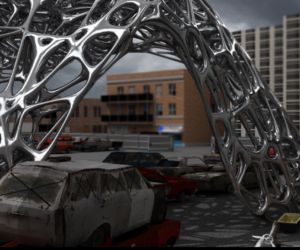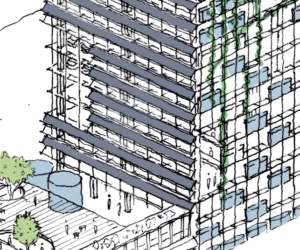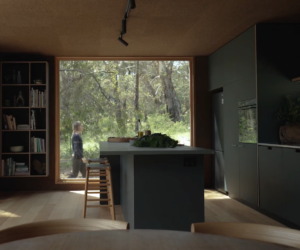Circularity presented by RMIT, Polestar and Green Magazine – Sawdust Pavilion
Sawdust Pavilion Waste Not Get More from RMIT Architecture on Vimeo.
Waste Not, Get More Recycling through Reuse
An estimated 2 million cubic metres of sawdust is generated annually worldwide. 420,000 tonnes. Roughly 20% of milled timber becomes sawdust and waste. Historically a waste material, through the philosophy of ‘Waste Not, Get More’ the project is strategic and opportunistic – exploring what else might be possible. Using its material namesake to create and scale a single branch into a repetitive pavilion, the Sawdust Pavilion aims to draw attention to the large-scale problem of waste in the construction industry, and the effect that humans have on the natural world that we take for granted.
The forest is formed around the idea of the repetitious box, architectures most banal yet generous form.
Architecture begins with the inevitable box, the forest scales it. We have embraced the aesthetic obnoxiousness of repetition that comes with manufactured scalability.
Situated on the standard forestry industries measurement of 1 square hectare, the forest has no beginning and no end. There is no set way for it to be experienced. The user determines their own path.
Through a study of repetition based around a single branch and a standardised square, the forest raises a question of human interference as it transforms an organic growth into what is obviously a man-made outcome, questioning where the line between emulation and representation exists. Stark and leafless trees offer shade through volume alone, a canopy devoid of natural growth.
RYAN POPPINS, TIM INGRAM & NOAH JAFFREY


